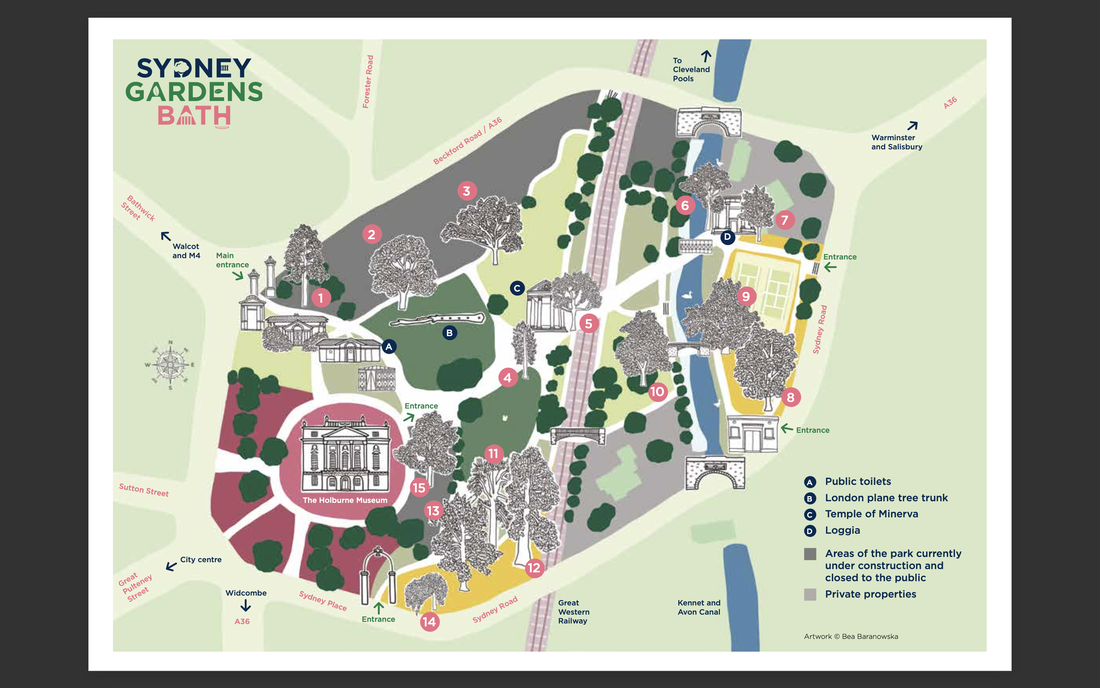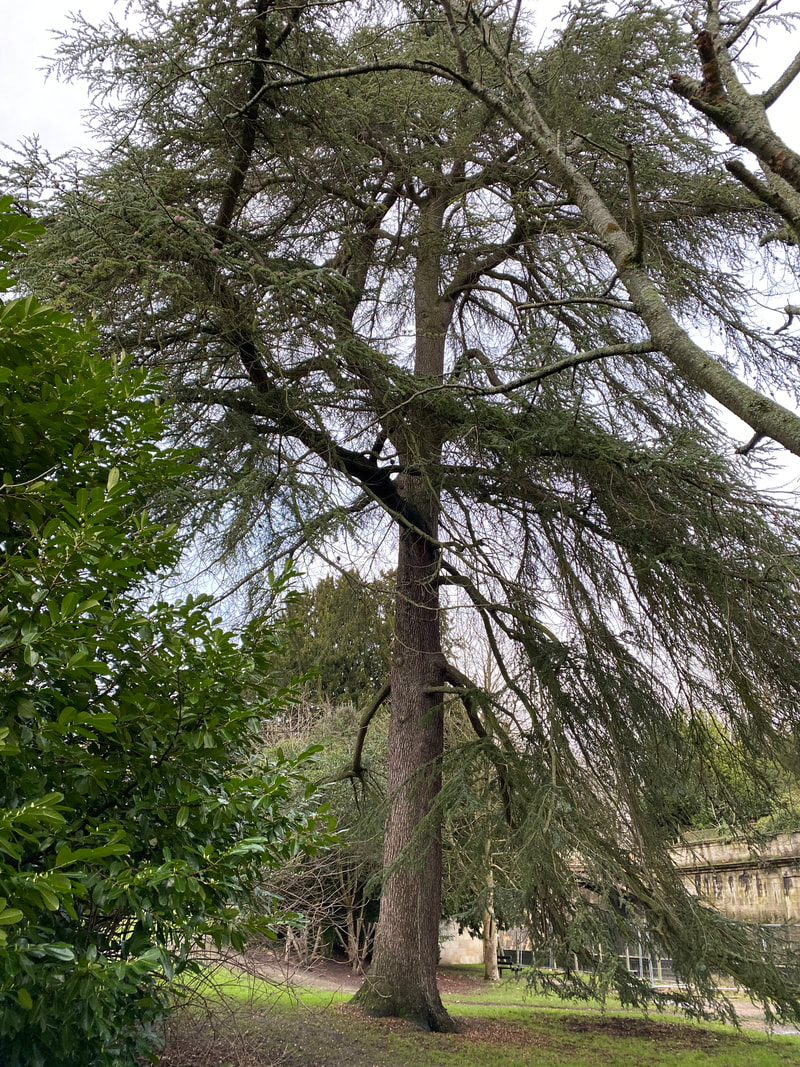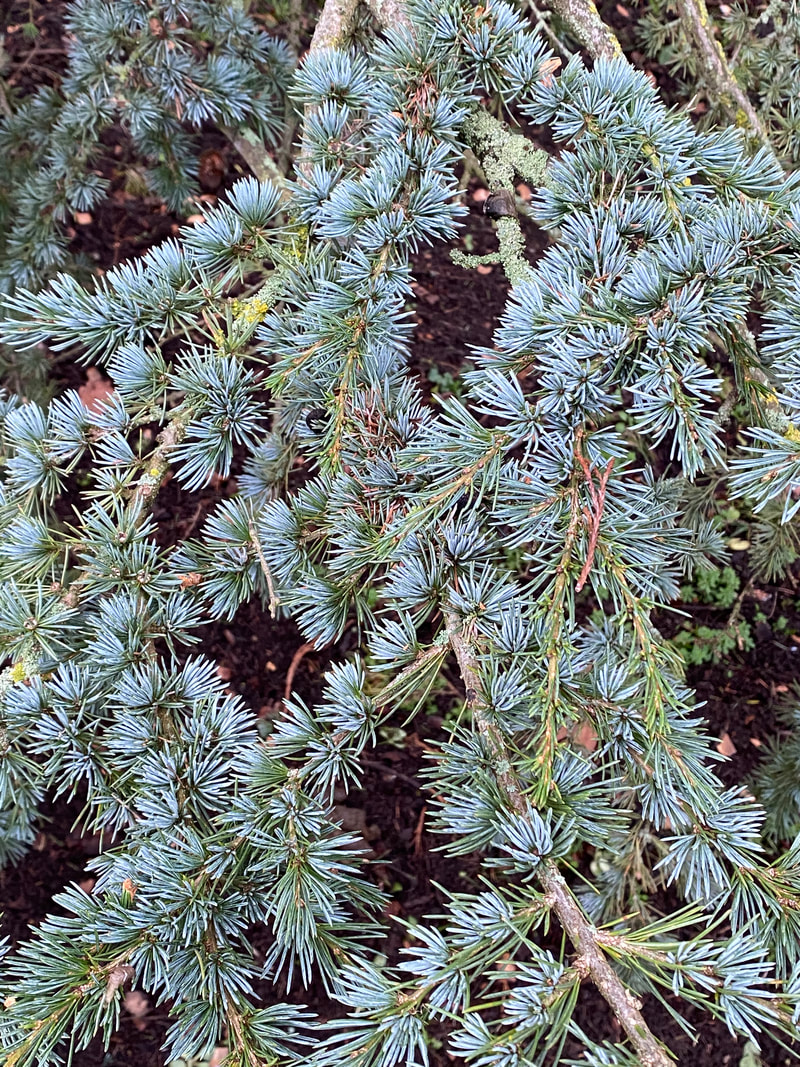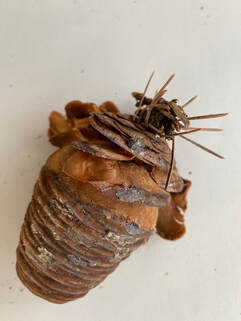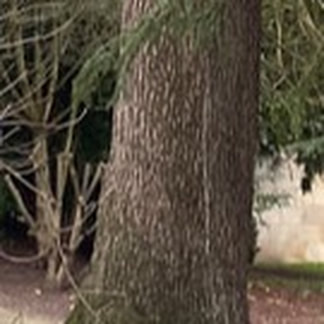The Blue Atlas Cedar in Sydney Gardens is the first of the group of 3 exotics which can be found down by the railway line: the two other trees being, the Giant Sequoia and the Cedar of Lebanon. The Blues Atlas cedars are native to the Atlas Mountains of Algeria and Morocco. Some sources believe the Blue Atlas cedar to be a subspecies of the Lebanon cedar, but the majority of modern sources regarded it as a distinct species Cedrus atlantica.
The Blue Atlas Cedar is a slow growing evergreen tree which can reach up to 25m high at maturity, with a spread of 15m. It has a low canopy with an average clearance 1.5m off the ground. If the tree is sited in an appropriate position it can live to 80 years and more.
The ‘Glauca Group’ of cedars are one of the most striking in appearance of all the blue conifers. They can be identified by their short; 2cm long, silvery-blue needles which spiral around the stem to form the leaf.
The ‘Glauca Group’ of cedars are one of the most striking in appearance of all the blue conifers. They can be identified by their short; 2cm long, silvery-blue needles which spiral around the stem to form the leaf.
The male blossom of the Blue Atlas is pale yellow in colour, cylindrical in shape and up to 5 cm in length. The female blossom is reddish/green in colour, around 1cm long and egg shaped. The fruit/cones which are barrel shaped, can grow up to 7cm in length and take up to 2 years to mature. The bark develops from a smooth green/grey in colour when young, into a brown/grey rough textured surface of flakes and fissures.
Reference
Gazzard, G. A. MSc (2021) wrote the above article with information from the following sources.
Rose, B. BSc (Hons) MSc DipArb(RFS) MICFor RCArborA Chartered Arboriculturist Arboricultural Association Registered Consultant (2020). Bosky Trees, Arboricultural Impact Assessment & Tree Protection Plan for trees at Sydney Gardens, Bath. (Accessed 13/03/21).
Hillier Trees; Cedrus atlantica Glauca Group, Blue Atlas Cedar. (Accessed 13/03/21). Available at:
https://www.hillier.co.uk/trees/listings/cedrus-atlantica-glauca/
Wikipedia; Cedrus Atlantica. (Accessed 13/03/21). Available at:
https://en.wikipedia.org/wiki/Cedrus_atlantica
